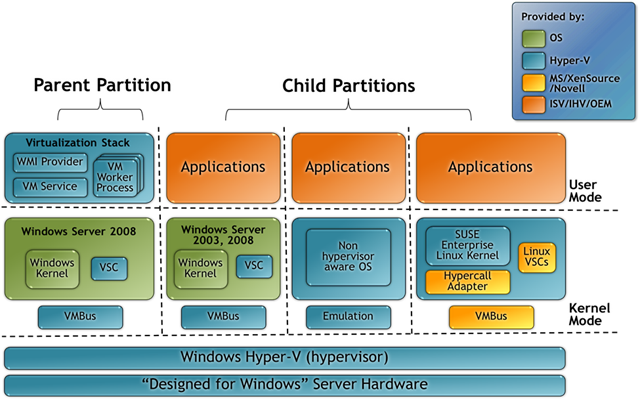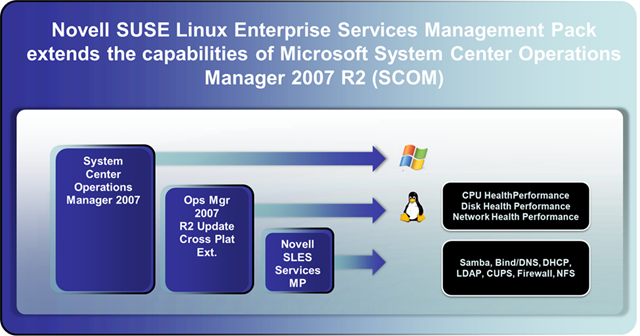Microsoft and Novell Technical Interoperability Update
By Jose Thomas
Hi, I’m Jose Thomas, Technical Solutions Director for Strategic Partnerships and Licensing at Microsoft.
Three years ago, Microsoft and Novell announced a partnership that was received with surprise and skepticism by the IT industry and customers alike. (Watch the press release at http://www.moreinterop.com/) What could possibly drive these two companies into a partnership considering the long history of competition behind them? The answer to this question is simple – customers and their complex IT environments.
Over the years, in search of efficiency and competitive advantage, customers started to look at the end promise of mixed source environments without always considering the plumbing that needs to be done to get disparate systems to work as one.
This is where the Microsoft and Novell Technical Collaboration comes into play. Engineers from both companies work side-by-side in our joint Cambridge, MA, lab working to test our interop solutions and ensure that they work better together. And both companies agreed to develop their products on open standards so that customers don’t have to worry about the plumbing. What started off as a lofty goal of four collaboration pillars has now grown to seven and continues to develop.
In this post, I’ll provide an update of the initial four areas that include Virtualization, Standards Based Systems Management, Standards Based Identity and Federation, and Document Format Compatibility. I’ll also review the incremental collaborations that include Moonlight, Linux Management for MS System Center, and Windows Accessibility.
Virtualization
Starting with Virtualization, the two companies agreed to optimize their respective Server OS platforms to take advantage of each other’s virtualization Hyper Visor. This was made possible by a set of VM adapters that were designed to broker communications between the XEN Visor and Windows Hyper V. These Hyper-call adapters, along with drivers for synthetic devices and storage were packaged up together and offered to customer as the Linux Integration Components. The Integration Components could be downloaded and copied into the Guest OS which when rebooted would experience the additional performance of being and enlightened or para-virtualized guest. This was a key differentiator for Novell as SUSE Linux is the only enlightened guest supported on Hyper-V. Most recently, Microsoft has contributed the Integration Components to the community thru a GPL V2 License
In the last six months, we’ve crossed the threshold into the Virtualization V2 solution. The key differentiator here is that SUSE Linux is an enlightened guest on Windows Server 2008 R2 with Live Migration. Now administrators can move Windows or Linux Guest across physical hosts without experiencing any downtime. With Live Migration supporting SUSE Linux, Microsoft and Novell have been able to narrow the perception gap in heterogeneous virtualization between Hyper-V and ESX from Virtualization Competitor, VMware.
Management
On the Management front, the initial agreement was for both companies to adhere to WSMan protocol standards for Systems Management. Both Microsoft System Center Operations Manager and Novell’s Zenworks Management Platform leverage WSMan protocols for server monitoring. But the innovation continued in the form of a Linux Management Pack that Novell release last year for Microsoft’s System Center. Novell’s Linux Management Pack extends the cross platform capabilities of System Center by monitoring seven key services within SUSE Linux. They include Samba, Bind/DNS, DHCP, LDAP, CUPS, Firewall, and NFS. Novell’s Linux management pack is currently only supported for SUSE Linux.
Identity and Federation
The next and most recent technical solution involves the Identity and Federation Pillar. The agreement was for both companies to adhere to WS* for directory and Identity Federation. This has been brought to life thru Microsoft’s AD FS (Active Directory Federation Service) and Novell’s Access Manager. Both of these products communicate thru the WS Federation Protocols include WS Trust and WS Security. Thru this federation model, customers can take advantage of AD based applications like Microsoft SharePoint in E-directory or other LDAP directory environments. We are currently developing a packaged solution that will extend SharePoint to non AD environments thru this AD FS – Access Manger federation model expected to ship in Q2 of CY10.
More Technical Interop Projects
I’ll spend this last section discussing the remaining technical projects which are Document Format Compatibility, MS SilverLight and Moonlight, and Windows Accessibility extended to Linux
- Office Format Compatibility – Microsoft and Novell, in conjunction with others, developed a set of bi-directional translators that provide conversion between the Microsoft Office and Open Office formats. These translators exist for word processing, spreadsheets, and presentations and can be found on Source Forge. Novell extends the interoperability between the two productivity application suites by including support for Microsoft’s Open XML format in Novell’s version of Open Office. http://www.novell.com/news/press/novell_boosts_openoffice_org_and_microsoft_office_interoperability
- Microsoft Silverlight extended thru Moonlight –Microsoft worked with Novell to enable them to deliver Silverlight support for Linux called Moonlight. The browser based plug-in allows SilverLight content to be consumed by Linux users running Firefox or other open source browsers. http://www.mono-project.com/Moonlight
- Accessibility Collaboration – Novell is building a set of adapters that allows Microsoft’s User Interface Automation (UIA) framework to work within Linux Accessibility Projects. This will allow the common Windows Accessibility capabilities to be leveraged by Linux accessibility projects. http://www.novell.com/linux/microsoft-accessibility.html
As we celebrate the 3rd anniversary, we’re happy to see the technical collaboration between Microsoft and Novell is alive and thriving with most of the key milestones completed, and our teams continuing to collaborate for our customers’ IT future. With over 475 customers who are taking advantage of the benefits, there’s no doubt that these two companies are taking their customers’ needs seriously. The bridge that was built between the two companies, supported by a mutual respect for intellectual property, continues to deliver interoperability solutions that lead the way to the ever-complex, next generation data center.
Jose Thomas, Technical Solutions Director


